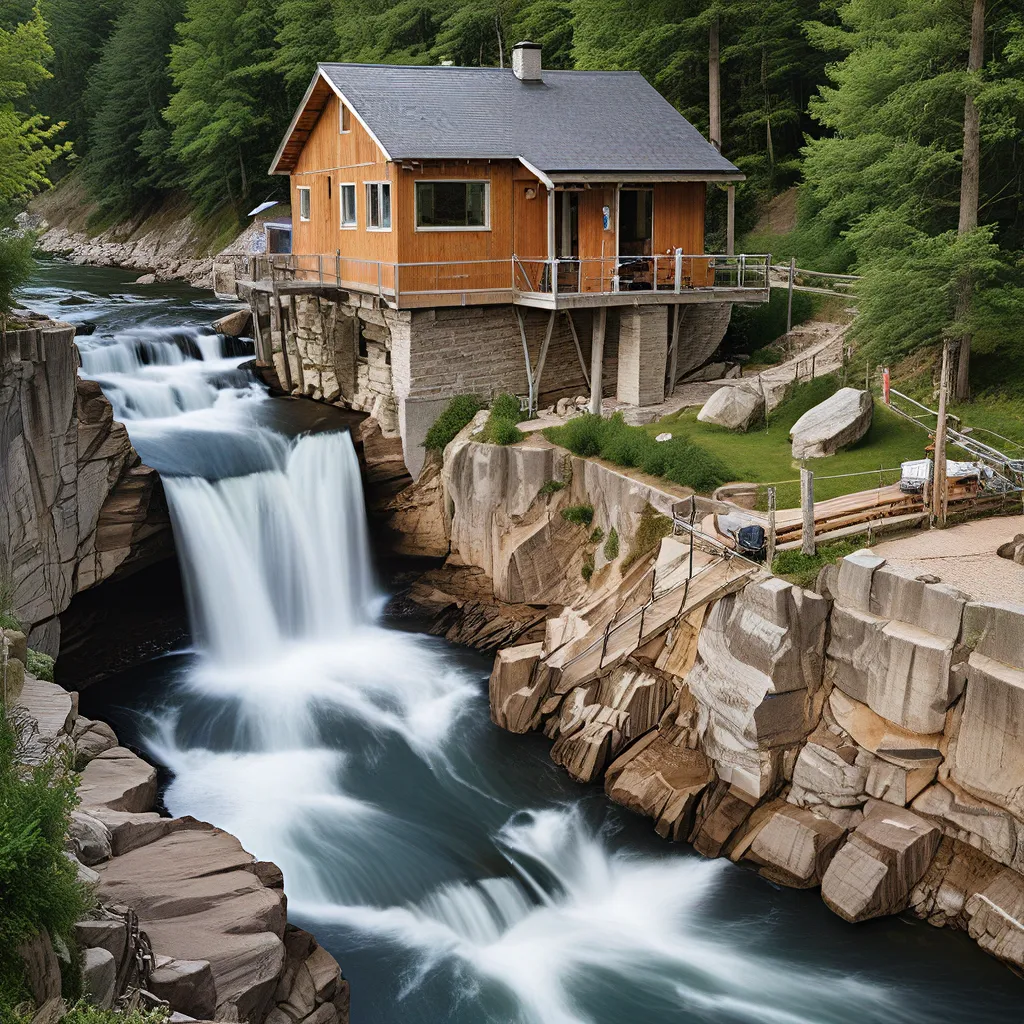
Hydropower Hacks: Harness the Flow to Power Your Home
Unleashing the Power of Flowing Water
Imagine a world where the simple act of turning on a light switch didn’t come with the baggage of hefty electricity bills or a guilty environmental conscience. Well, my friends, that world is closer than you might think – and it all starts with harnessing the power of flowing water.
As an avid homesteader and sustainability enthusiast, I’ve been fascinated by the untapped potential of microhydro systems for years. These ingenious setups allow everyday folks like you and me to generate clean, reliable electricity right from the comfort of our own backyards. And let me tell you, once you dive into the world of hydropower, there’s no going back.
Tapping into Nature’s Endless Energy
Picture this: You’re sitting on your porch, sipping your morning coffee, when you hear the soothing sound of a nearby stream gurgling along. Little do your neighbors know, that innocent-looking waterway could be the key to powering your entire home – and significantly slashing your energy bills in the process.
According to Mother Earth News, microhydro systems can generate anywhere from 75 to 350 kilowatt hours (kWh) per month, depending on the flow rate and vertical drop of the water source. That’s enough juice to keep the lights on, charge your devices, and maybe even power an electric vehicle – all while reducing your reliance on the grid.
The Science Behind Hydropower Magic
But how exactly does this whole microhydro thing work? It all comes down to the simple principle of converting the kinetic energy of flowing water into electricity. Here’s a quick breakdown:
-
Water Flow: The first step is to assess the flow rate of your water source, usually measured in gallons per minute (GPM). As Mother Earth News explains, you can use the “container method” to measure this – just time how long it takes to fill up a container of known size.
-
Water Pressure: Next, you need to determine the pressure, or “head,” of the water flow. This refers to the vertical distance the water travels as it flows through your system. The combination of flow rate and head is what determines the raw energy potential of your site.
-
Turbine Power: Once you’ve got your site measurements dialed in, it’s time to choose the right turbine for the job. There are various designs, from high-head impulse turbines to low-head options, each suited for different flow and pressure conditions. The turbine is essentially the heart of the system, converting the water’s kinetic energy into rotational motion.
-
Electricity Generation: The final step is to harness that spinning motion to generate electricity. This is where the generator or alternator comes into play, converting the turbine’s rotational energy into usable electrical current – whether it’s direct current (DC) or alternating current (AC).
Powering Your Home, Sustainably
Now, I know what you’re thinking: “Okay, this all sounds great, but how much is it going to cost me?” The truth is, the upfront investment for a microhydro system can range from around $1,000 for the smallest setups to $20,000 for a larger system capable of powering multiple modern homes. But before you write it off as too expensive, consider the long-term savings.
As one YouTuber explains, a well-designed microhydro system can actually pay for itself in just a few years through the energy savings it provides. And let’s not forget the environmental benefits – no more relying on fossil fuels or contributing to the strain on the electrical grid.
Hydropower Hacks: DIY and Beyond
If you’re the handy type, you might even be able to build your own microhydro system from scratch. According to Mother Earth News, there are all sorts of creative DIY methods, from converting a centrifugal pump into a turbine to using an induction motor as an alternator.
Of course, if you’re not quite the MacGyver type, there are plenty of pre-engineered microhydro kits and systems on the market. Plugn’Save Energy Products, for example, offers a range of reliable, turnkey solutions to get you up and running with minimal hassle.
Harnessing the Flow: Real-Life Examples
To really bring this concept to life, let’s take a look at a couple of real-world microhydro success stories.
First, there’s the remote homestead in British Columbia that used an existing 1 1/4-inch domestic water supply pipe to power its lights, radio, and stereo. As Mother Earth News reports, they installed a modest 50-kWh-per-month system using a Harris hydroelectric turbine and a Ford alternator.
On the other end of the spectrum, a First Nations community in British Columbia needed a much more powerful setup. With the help of microhydro expert Scott Davis, they installed a 900-foot pipeline delivering 350 GPM over 315 feet of head. This beefy system generates a whopping 7,200 kWh per month using an 8-inch Pelton turbine and a 12-kilowatt alternator.
Harnessing the Flow: Your Turn
So, are you ready to take the plunge into the world of microhydro power? I know the prospect can seem a bit daunting at first, but trust me, it’s well worth the effort. With a little research, some elbow grease, and maybe a helping hand from the experts, you could be well on your way to tapping into nature’s endless energy and slashing your utility bills in the process.
Remember, the key is to start small and assess your specific water resources. Measure the flow, calculate the head, and then start exploring the various turbine and generator options that best fit your needs and budget. And who knows, you might even end up with enough juice to power your entire home – and maybe even charge your electric vehicle while you’re at it.
So, what are you waiting for? The flow is calling, my friends. It’s time to harness the power of H2O and take control of your energy future. Happy hydropower hacking!